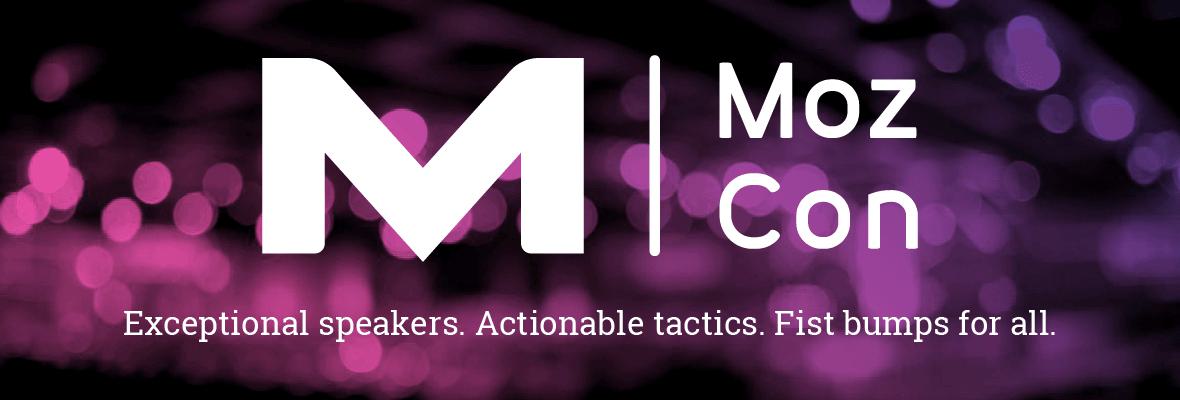
The MozCon 2018 Final Agenda
5/23/2018 We're thrilled to announce our final agenda for MozCon 2018! You'll find descriptions of all our talks, including this year's six community speakers.
Welcome to the Q&A Forum
Browse the forum for helpful insights and fresh discussions about all things SEO.
After more than 13 years, and tens of thousands of questions, Moz Q&A closed on 12th December 2024. Whilst we’re not completely removing the content - many posts will still be possible to view - we have locked both new posts and new replies. More details here.
Job Title: Content Manager
Company: Moz
Favorite Thing about SEO
The words "canonical" and "disavowed." I may or may not be a so-called word geek.

5/23/2018 We're thrilled to announce our final agenda for MozCon 2018! You'll find descriptions of all our talks, including this year's six community speakers.

3/29/2018 Wondering what's on the plate for this year's MozCon? Wait no more — the initial 2018 agenda is here! Check out which industry experts will be speaking, what topics we're covering, and snag your ticket before we sell out.

12/6/2017 We publish the Moz Blog to bring transparency and understanding to an industry that often lacks both. To that end, we try to regularly ask you how we're doing. This post shows what you all had to say.

11/16/2015 I'm thrilled to announce the next in Moz's series of beginner's guides: The Beginner's Guide to Content Marketing.

7/22/2015 Here at Moz, we've published blog posts on a daily cadence since before almost any of us can remember. We kept at it because it was the way we'd always done it, and thanks to a conversation between Rand and the folks at HubSpot, we decided to put that approach to the test.

6/22/2015 This is the fifth and final round-up of our 1-2 minute video tutorials to help you get the most out of Moz's tools. One last time, welcome back to your Daily SEO Fix!

6/11/2015 Here's the fourth round-up of our 1-2 minute video tutorials to help you get the most out of Moz's tools. Welcome back to your Daily SEO Fix!

6/4/2015 Here's the third round-up of our 1-2 minute video tutorials to help you get the most out of Moz's tools. Welcome back to your Daily SEO Fix!

5/28/2015 Last week, we began posting short video tutorials that help you all get the most out of Moz's tools. Today, we serve up five new videos in the second roundup of your Daily SEO Fix.

5/21/2015 We're excited to announce a new collection of video tutorials focused on tips and tricks with Moz tools, each in two minutes or less. Welcome to your Daily SEO Fix!

12/30/2014 It's time for the annual round-up of the cream of the crop -- the very best of the Moz Blog from 2014. Whose comments earned more thumbs up than anyone else's this year? Dive in to find out, and happy New Year from Moz!

8/20/2014 We're excited to announce the third beginner's guide from Moz: The Beginner's Guide to Link Building!

7/1/2014 Let's face it: We're all pressed for time, and measuring, analyzing, and reporting the success of content marketing is time-consuming work. Here's how you can distill the performance of your content into a single metric: one metric to rule them all.

12/31/2013 On the last day of 2013, we bring you a roundup of the year's top posts (based on several metrics), the top comments from community members, and the most active commenters on the blogs. Happy New Year!

12/17/2013 Last month, 766 of our readers took a few minutes to tell us what they thought of the Moz Blog. We were absolutely blown away by the quality of the feedback we got, and we're excited to share what we learned with all of you.
My background includes journalism, teaching, and digital communications--a blend that led me to the Content Marketing team at Moz, where we aim to inspire audiences to connect with Moz and accelerate their journey toward mastery of both our tools and our industry.
I geek out over board games, craft brews, Pagliacci Pizza (who am I kidding, any pizza), woodworking, and The West Wing (the best TV show ever produced). I'm a real-estate nerd who enjoys HGTV and plans entire trips around where he's going to eat next.
Looks like your connection to Moz was lost, please wait while we try to reconnect.